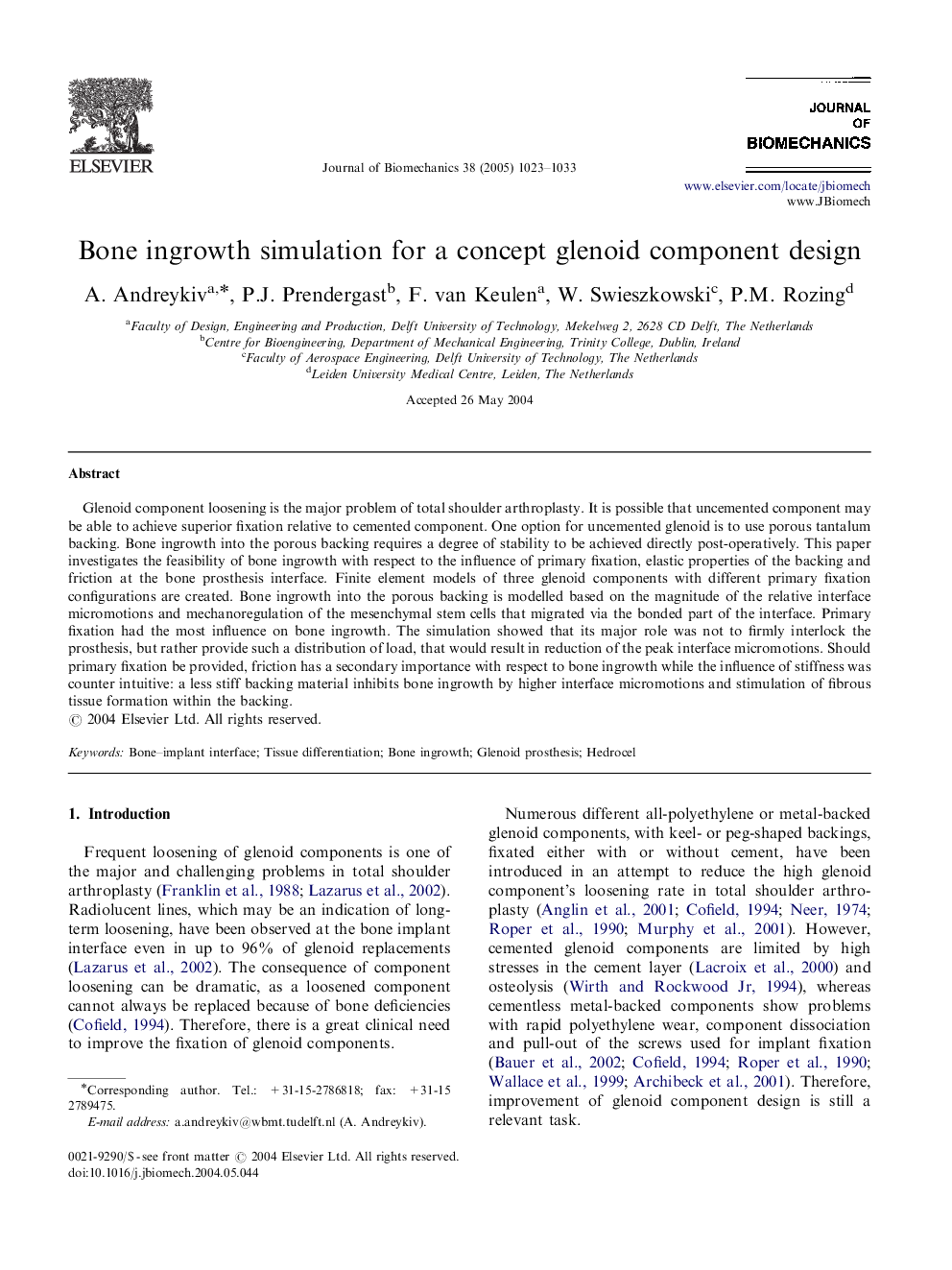| Article ID | Journal | Published Year | Pages | File Type |
|---|---|---|---|---|
| 10433814 | Journal of Biomechanics | 2005 | 11 Pages |
Abstract
Glenoid component loosening is the major problem of total shoulder arthroplasty. It is possible that uncemented component may be able to achieve superior fixation relative to cemented component. One option for uncemented glenoid is to use porous tantalum backing. Bone ingrowth into the porous backing requires a degree of stability to be achieved directly post-operatively. This paper investigates the feasibility of bone ingrowth with respect to the influence of primary fixation, elastic properties of the backing and friction at the bone prosthesis interface. Finite element models of three glenoid components with different primary fixation configurations are created. Bone ingrowth into the porous backing is modelled based on the magnitude of the relative interface micromotions and mechanoregulation of the mesenchymal stem cells that migrated via the bonded part of the interface. Primary fixation had the most influence on bone ingrowth. The simulation showed that its major role was not to firmly interlock the prosthesis, but rather provide such a distribution of load, that would result in reduction of the peak interface micromotions. Should primary fixation be provided, friction has a secondary importance with respect to bone ingrowth while the influence of stiffness was counter intuitive: a less stiff backing material inhibits bone ingrowth by higher interface micromotions and stimulation of fibrous tissue formation within the backing.
Related Topics
Physical Sciences and Engineering
Engineering
Biomedical Engineering
Authors
A. Andreykiv, P.J. Prendergast, F. van Keulen, W. Swieszkowski, P.M. Rozing,
